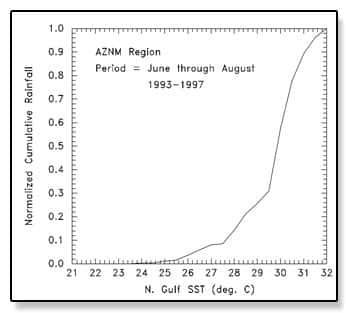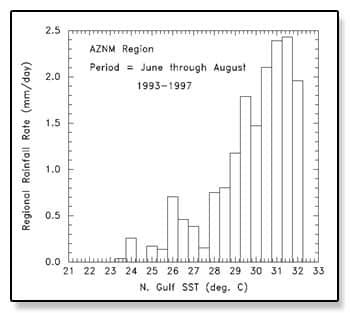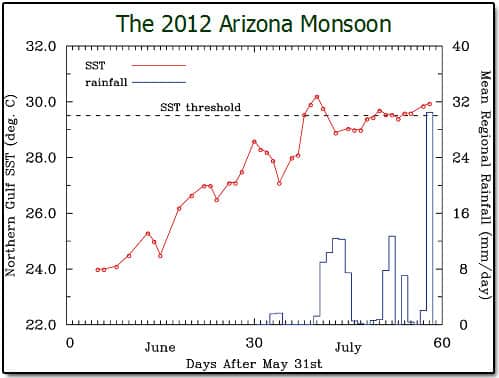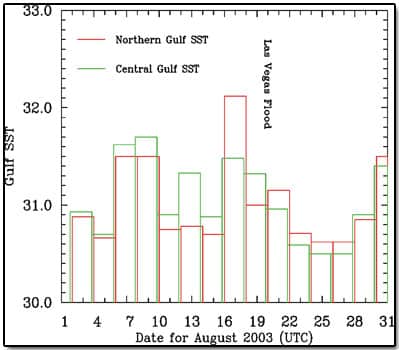North American Monsoon
Project Description
The North American Monsoon (NAM) is a large-scale feature having a strong impact on summer rainfall patterns and amounts over North America. For example, it supplies about 60%-80%, 45% and 35% of the annual precipitation for northwestern Mexico, New Mexico (NM) and Arizona (AZ), respectively. Also, anomalously wet NAMs in Arizona are strongly anti-correlated with anomalously dry summers in the mid-west. Although regional climate models have succeeded in reproducing some features of the NAM, its onset, strength and regional extent are not well predicted, and a physical understanding of key processes governing its life-cycle remain elusive.
Here we propose a partial mechanistic understanding of the NAM incorporating local- and planetary-scale processes that quantitatively relates the Gulf of California (GC) sea surface temperatures (SSTs) to the timing, amount and extent of NAM rainfall. The proposed hypothesis is supported with satellite observations of SST, sea surface height (SSH) and rainfall amount; temperature and humidity profiles from ship soundings launched over the GC; climatologies of SST, outgoing longwave radiation (OLR) and 500 hPa geopotential height reanalysis.
A physical understanding of the NAM is needed to guide improvements in regional and global scale modeling of the NAM and its remote impacts on the summer circulation and precipitation patterns over North America. This understanding is also needed to predict the NAM’s response to global warming.
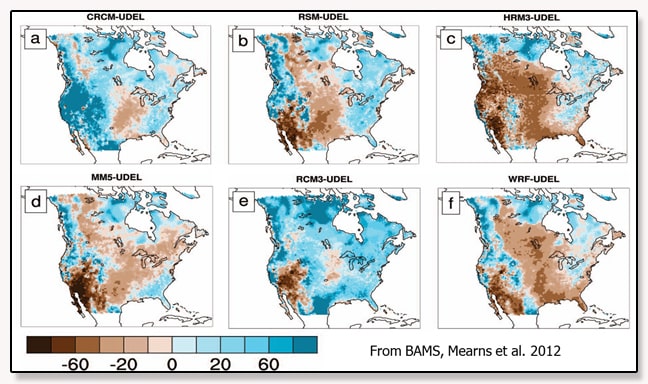
Summer precipitation bias (% difference; model-observation) for regional models indicates that summer rainfall is generally most under-predicted in the NAM region. (shown by several studies).
CONTACT
David Mitchell, Ph.D.
Project Director
David.Mitchell@dri.edu
LOCATION
Desert Research Institute
2215 Raggio Parkway
Reno, NV 89512
DIVISION
Atmospheric Sciences
